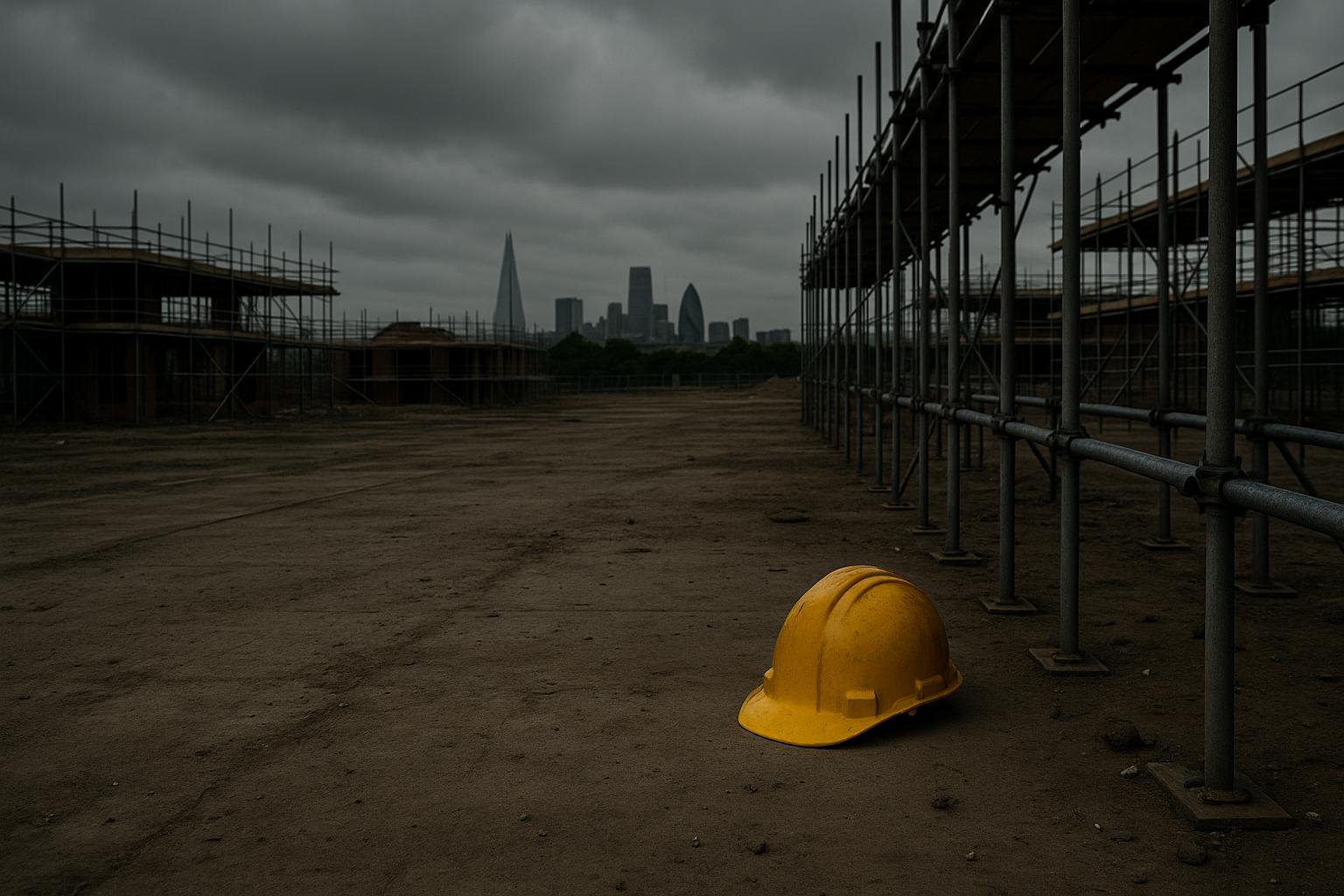The UK housing sector faces a severe crisis that casts serious doubt on the Labour government's ambitious pledge to deliver 1.5 million new homes within the current parliamentary term. Industry data reveals a stark slump in housebuilding activity, with recent figures showing residential contract awards down by 44% and planning permissions plunging by 42% compared to last year. London, a critical market for housing expansion, saw just over two thousand new homes started in the first half of the year—a fraction of the levels needed to meet targets. This collapse is driven by a combination of labour shortages, soaring construction costs exacerbated by increased employers' national insurance contributions, stringent post-Grenfell building regulations, planning backlogs, and conflicts over the balance of private and social housing in new developments.
The broader economic and policy context further undermines the sector. The end of government incentives such as Help-to-Buy, the cessation of buy-to-let growth, a rise in stamp duty earlier this year, and persistently high interest rates have all contributed to suppressed property sale prices. Social housing providers, meanwhile, grapple with cash constraints and ongoing cladding remediation issues. Multiple reports underline that despite proposed planning reforms and promises of new towns and affordable housing funds, structural challenges and poor market conditions render the 1.5 million homes pledge increasingly unrealistic.
The political fallout has been significant, especially for Angela Rayner, the former housing minister. Despite her ambitions, Rayner reportedly struggled with the impossible brief, reportedly threatening resignation multiple times before being reassured by former Prime Minister Tony Blair. Her subsequent removal following a personal tax underpayment controversy—where she admitted to underpaying stamp duty on an expensive property—may have inadvertently relieved her of the burdensome portfolio. Prime Minister Keir Starmer has publicly supported her, but critics argue the scandal and the unfathomable housing targets have damaged Labour’s credibility on housing.
The industry’s malaise is underscored by official construction data, which reflects broader weaknesses in the UK economy. Earlier this year, construction Purchasing Managers’ Index (PMI) figures signalled contraction for the first time in nearly a year, with housebuilding activity showing the sharpest decline. This downturn is linked to economic uncertainties, elevated borrowing costs, and diminished business confidence. Although some sectors, particularly infrastructure and green projects, prompt optimism among certain firms, the housebuilding segment remains fragile.
Housing approvals data from England reinforce this picture of decline. Permissions for new builds have hit their lowest since 2014, with only 230,000 units approved in the year to June—far short of the government’s target of 370,000 new homes annually. The dwindling supply has pressured the market, pushing rents up by over 8% and house prices by more than 2% in the past year alone, despite the Bank of England’s efforts to ease borrowing costs through rate cuts.
While recent construction indices reveal some pockets of resilience, notably a 24% quarter-on-quarter rise in residential starts in early 2025 and a modest uptick in private housing activity, this is tempered by a sharp fall in civil engineering projects. Industry analysts caution that for this recovery to be sustained, greater confidence throughout the supply chain is essential. The government’s upcoming spending review remains a critical juncture, with clarity on infrastructure investment potentially unlocking broader momentum for housing and local projects.
In parallel, the Treasury has temporarily suspended import tariffs on a range of building materials until mid-2027, aiming to alleviate supply costs and support construction activity. While this move is welcomed by some in the sector, it is unlikely to counterbalance the significant regulatory, financial, and labour market constraints currently hampering growth in housebuilding.
The current environment paints a sobering view of the UK’s housing ambitions. Without substantial structural reforms, improved market conditions, and greater policy coherence, the dream of rapidly expanding the housing stock appears increasingly unattainable, leaving many to question whether political rhetoric will translate into tangible homes for those in need.
📌 Reference Map:
- Paragraph 1 – [1], [2], [3], [4]
- Paragraph 2 – [1], [2], [3]
- Paragraph 3 – [1], [5]
- Paragraph 4 – [4], [1]
- Paragraph 5 – [3], [1]
- Paragraph 6 – [6], [1]
- Paragraph 7 – [6], [1]
Source: Noah Wire Services
